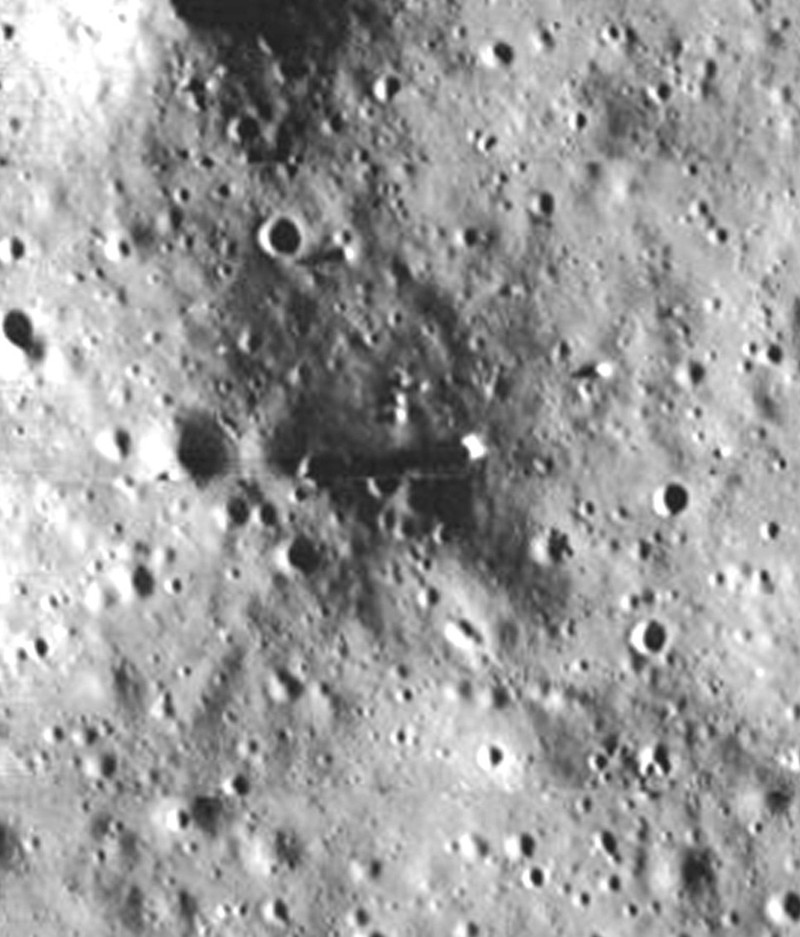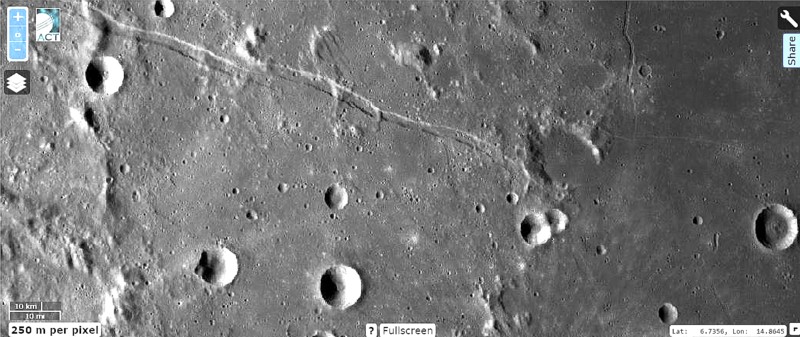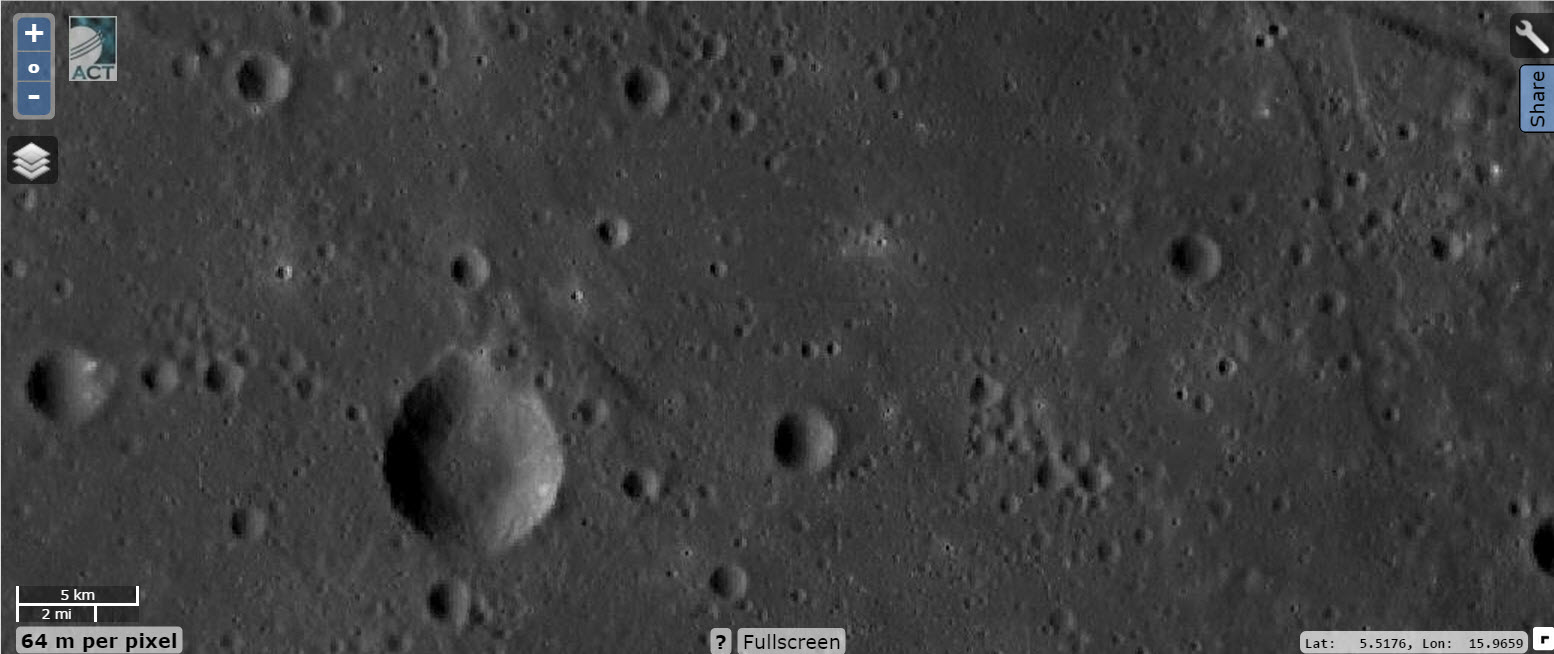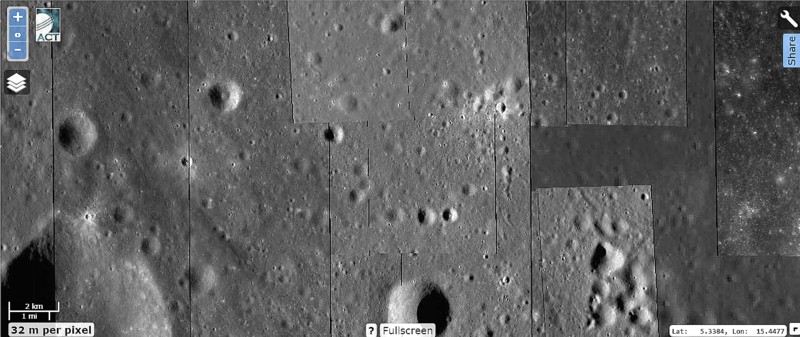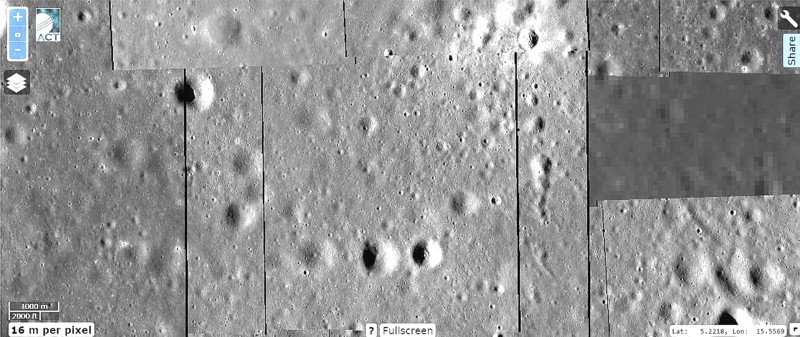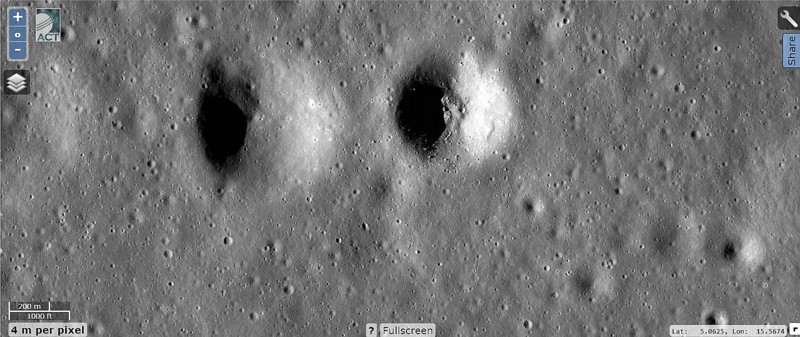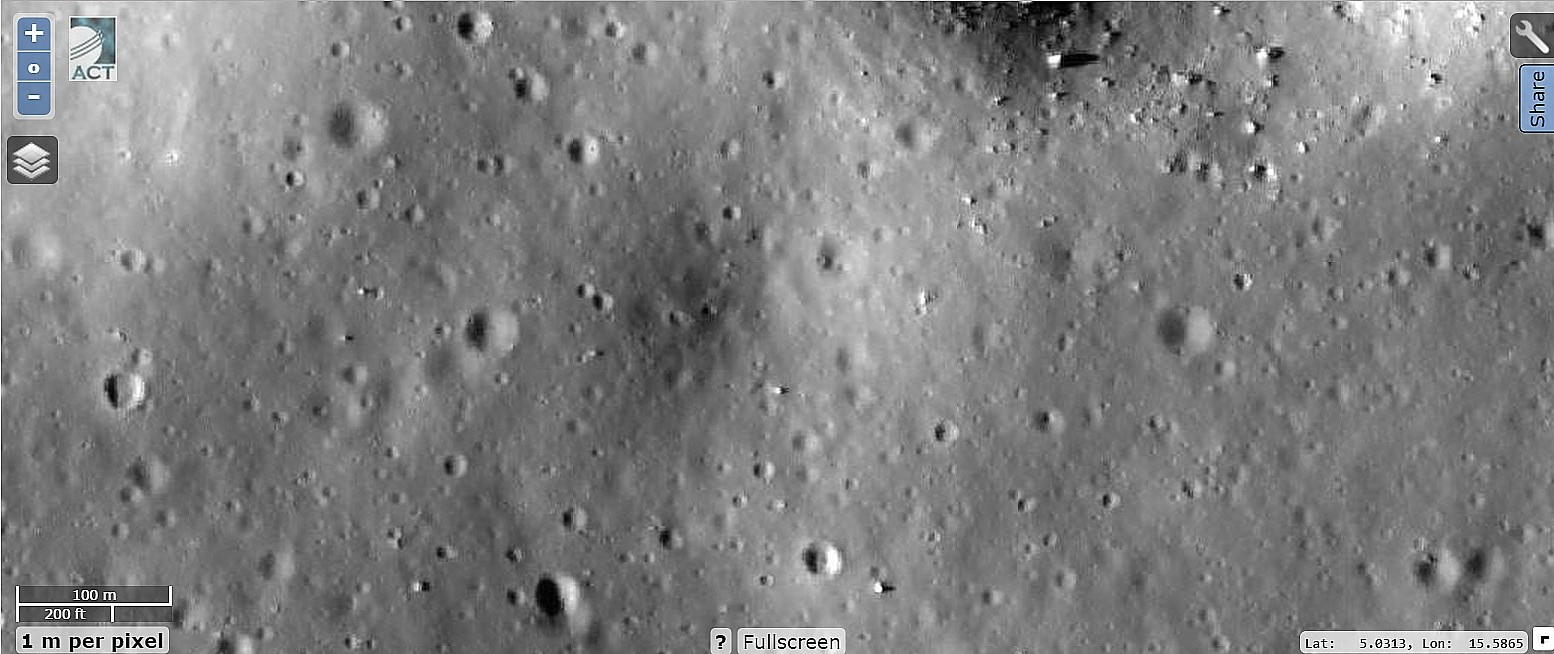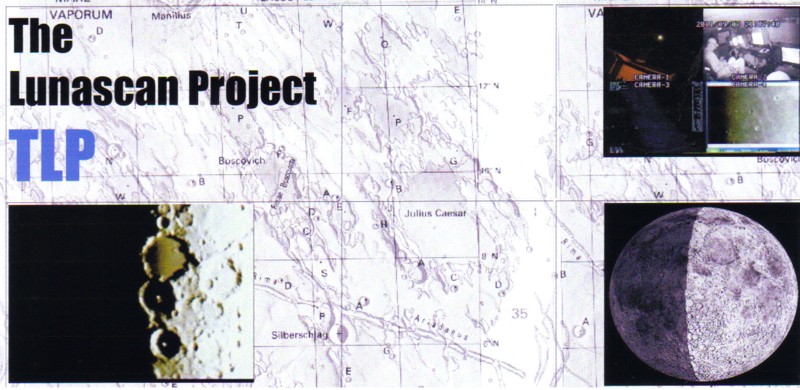 |
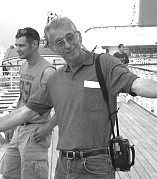 |
Blair Cuspids
by Fran Ridge
Figure 1. 86-H-78
Updated: 23 Dec 2016
In 1962 Carl Sagan, famous astronomer (& UFO skeptic) spoke on the possibility of discovering alien artifacts on the Moon stating that "forthcoming photographic reconnaissance of the moon from space vehicles - particularly of the back - might bear these possibilities in mind."
If the evidence in our imaging of the lunar surface would indicate that some form of intelligence was at work in some areas on the Moon, in particular, the area of the "Blair Cuspids", the question then would become, was this the work of an ancient nature or more recent one? In itself, either finding would be of extreme importance to planetary science. And what if there was new evidence to answer one or both of these questions since their discovery over 50 years ago?
The DiscoveryIn November of 1971 I had read about the strange "towers" found on the Moon by NASA. At that time I didn't do much of anything to check it out. But in the summer of 1996 I had set up The Lunascan Project, and one of the very first things we wanted to do besides the main goal of actual live imaging was to check out some of Richard Hoagland's claims about anomalistic targets on the Moon. But somehow everyone had missed out on the the "Blair Cuspids". I didn't know where it would take us but I did find out that the image number itself didn't take us very far. The image number 86-H-758 was elusive, and partly so because the article had mentioned Lunar Orbiter III. During the 1970's we went through some very dangerous times and NASA feared a nuclear war would destroy all the records of all the great space missions, in particular, Apollo, so all of the images were re-catalogued and duplicated and stored at various locations deep underground.
William Blair, was a member of the Boeing Company's biotechnology unit, and he had emphasized that he was not asserting that the spires were the work of a transitory intelligence, but be did say this: "If such a complex of structures were photographed on earth, the archeologist's first order of business would be to inspect and excavate test trenches and thus validate whether the prospective site has archeological significance." Blair had gone over the photo with a compass and protractor and had found that the "spires" formed a basic X, Y and Z right-angle coordinate system, six isosoles triangles and two axes consisting of three points each. The scientist discovered in the photo what appeared to be a large rectangular shaped depression or pit directly west of the largest "spire", estimated to be as tall as 70 feet. Blair said the shadow cast by this depression seemed to indicate four 90-degree angles and resembled the profile of an eroded pit structure. The moon spire photo was analysed by Blair the same way he once used aerial survey maps to look for possible prehistorical archeological sites in the southwest United States. Most space scientists of Boeing, which had built Lunar Orbiter, believed the spires were the result of some geophysical event and they discounted Blair's speculations. Dr. Richard V. Shorthill of the Boeing Scientiflc Research Laboratory, an expert on moon topography said, "Pick some (objects) at random and you eventually will find a group that seems to conform to some kind of pattern." But Blair responded: "If this same axiom were applied to the origin of such surface features on earth, more than half of the present known Aztec and Mayan architecture would still be under tree and bush studded depressions....the, science of archeology would have never been developed, and most of the present knowledge of man's physical evolution would still be a mystery."
Re-DiscoveryOur Lunascan team is very talented and in late 1995 we began to look into the Blair Cuspids. By the summer of 1996 the VGL group of Mike Lomax, Lan Fleming, John Koehler had gone to work on the photo. The image with the cuspids turned out to be LO2 61H3 (Lunar Orbiter II, not III). After several weeks of research & investigation we had re-discovered the Blair Cuspids and their actual location. This strange formation was on the lunar Near Side in the Sea of Tranquility. With the aid of David Williams of the National Science & Data Center in Greenbelt, Maryland, I was able to get a second image, LO2 62H3, taken 2.2 seconds later and the Cuspids had moved to opposite edges of the camera's field of view in that time. One must read all the data for this extremely interesting find.
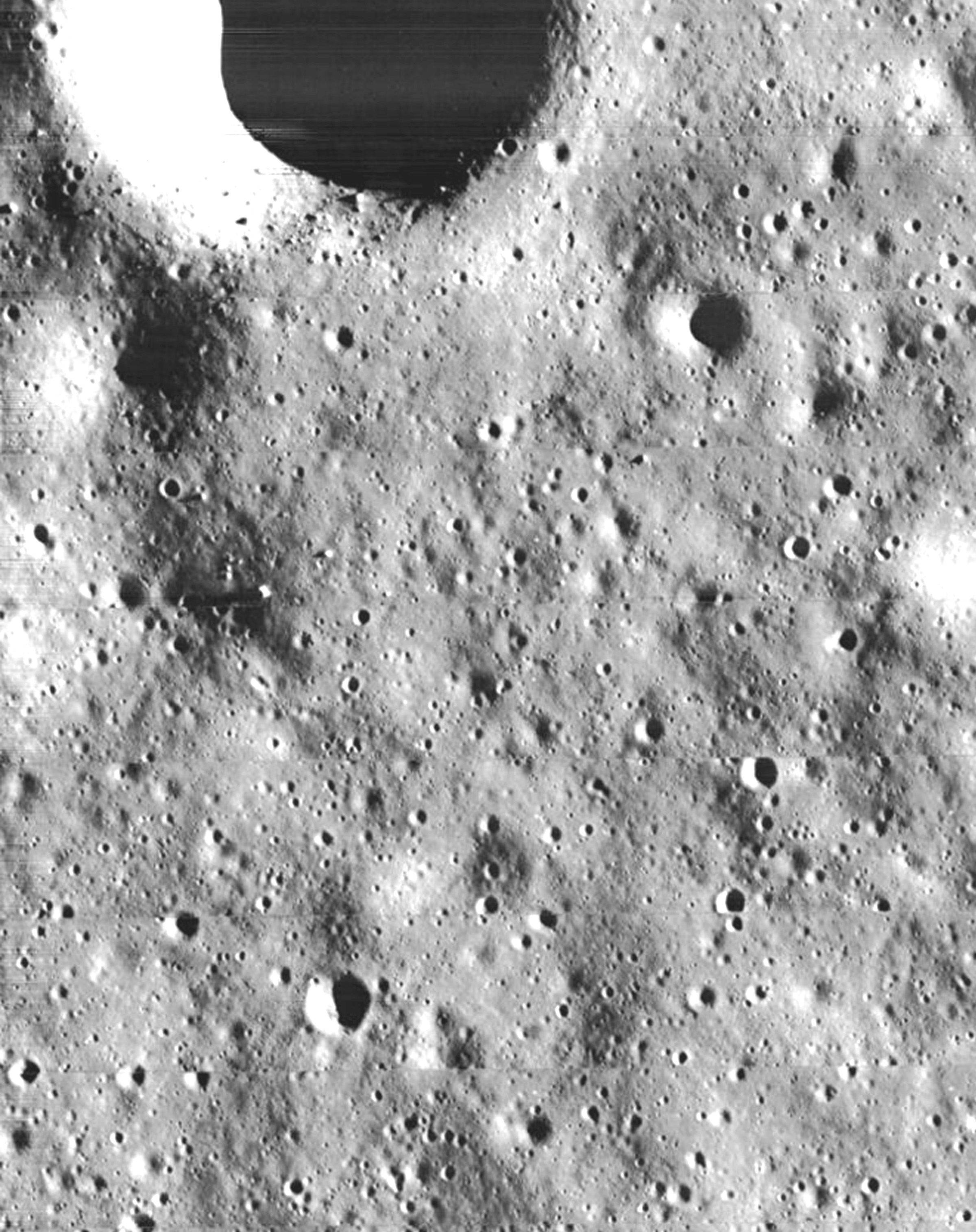
Halfway up and to the left one can see the long shadows cast by the mysterious "Blair Cuspids" in Lunar Orbiter 2.
More confirmation in 2001It was very important to science for someone to go back to the Moon and take a second and closer look at the site sometime in the future, with different sun angles and greater resolution. Eight years had passed since our intense interest and we had thoroughly discussed all the issues and details, and I drew up a mission plan. TransOrbital was planning on sending a privately-funded orbiter to the Moon to conduct live imaging of the lunar surface at 50 km up, then finally, barn-storming imaging at 10 km!!! I emailed Dennis Laurie, TransOrbitals' Public Relations man on January 10th, 2004. Six days later Laurie advised that he had forwarded my plan to the CTO, Paul Blase, for consideration. "It looks like a very promising opportunity to solve another 'mystery' ", Laurie wrote. The Trailblazer orbiter spacecraft was built, a launch vehicle was purchased. But TrailBlazer never got off the ground. They couldn't launch in the U.S. and the U.S. wouldn't allow Russia to launch it.
In 2001, Lan Fleming & I published our report in the New Frontiers in Science. The same year, Mars Project image specialist, Mark Carlotto, conducted an extensive 3D analysis of the Blair Cuspids and the surrounding terrain. His findings, also published in New Frontiers In Science reinforced ours and added other important conclusions.2004 -TransOrbital TrailBlazer Mission & Lunascan Mission Plan
2009 - Lunar Reconnaissance Orbiter (LRO)NASA's new orbiter was launched in June to orbit around the Moon, taking live and very high resolution images of the surface. It was supposed to be a 1-year mission but was extended several times. More on that, coming up.
2012 - Renewed Interest in the CuspidsBefore we delve into the LRO images, an interesting article appeared in 2012. Two researchers at Arizona State University (ASU) had made a rather controversial proposal: have the public and other researchers study the high-resolution photographs of the Moon already being taken by the Lunar Reconnaissance Orbiter (LRO), to look for anomalies that may possibly be evidence of artifacts leftover from previous alien visitation, possibly thousands of years ago. The theory is that if our solar system had been visited in the past, the Moon would have made an ideal base from which to study the Earth. The paper had just been published in the journal Acta Astronautica. Professor Paul Davies and research technician Robert Wagner admit that the chances of success were very small, but argue that the endeavour would be worth the minimal investment required. The photographs were already being taken on a regular basis by LRO. Any interesting finds could be examined by others including imaging professionals. Shape-recognizing software could also be used to help discern any possible artificial artifacts from natural ones.
In a CIT briefing I asked colleague, Ned Haskin, to look into the LRO data to find images at the cuspid's coordinates, 5.1 N lat, 15.5 E long. I believe he came up with a long vertical image strip, along with the support data, but I was preoccupied and never was able to use the information.
On May 1st I received an email from John Keller, NASA contact for the LRO project. I had been hoping for images with more shadow than the ones you are about to see. He said he agreed that the images at that location had sun angles no lower than 47 degrees (image pair M15984759LC M159847595RC). In a May 4th email he mentioned that the two images he referenced were of the highest resolution available from LRO at 0.5 m/pixel taken during the 50 km orbit. (Twice as good as LO2 was at best). They briefly did an equitorial dipping orbit that brought them down to as low as 20 km for the purpose of imaging the Apollo landing sites, but most of the time due to limited propellant they moved to a low-cost elliptical orbit where over that latitude the spacecraft was roughly 100 km above the surface.
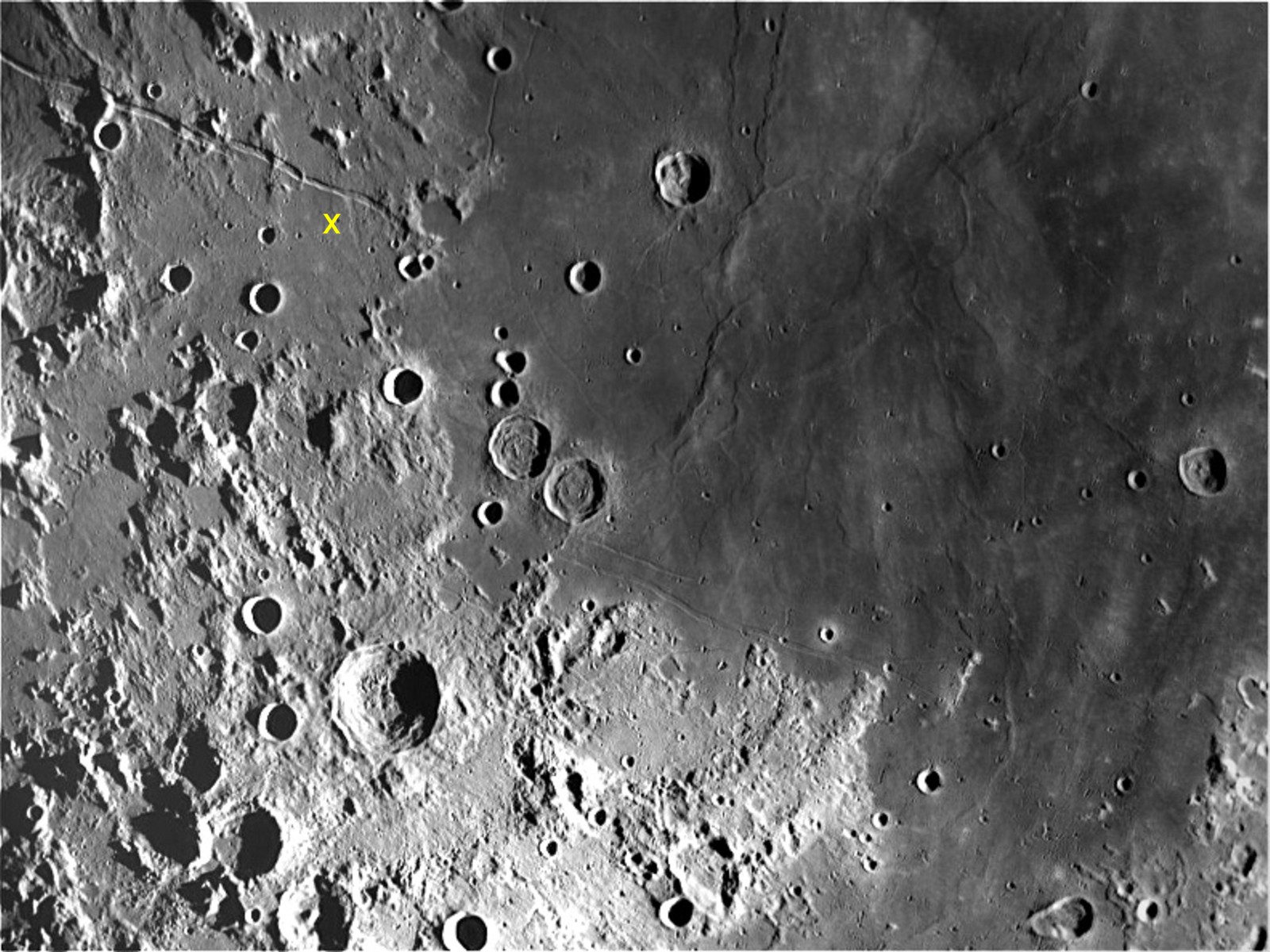
| This is one of the best
Earth-based telescopic images of the Sea of
Tranquility. The area above takes-in parts of four
Rukl Sections. Upper left, Section 34 & upper
right, Section 35, mostly. Lunar Orbiter II took some
fantastic images in this area in 1966 while looking
for a smooth landing spot for the then upcoming Apollo
11 mission which made history three years later in
July of 1969. Prior to the LO imaging, Ranger 6
& 8 crashed (purposely) less than 75 km NE of
Tranquility Base, and Surveyor 5 soft-landed about 30
km N, so all of the attention and U.S. presence was to
the upper right. Not discussed much is the fact that
Surveyor 4 was supposed to have touched down in the
same area but never made it. But that's another story. |
